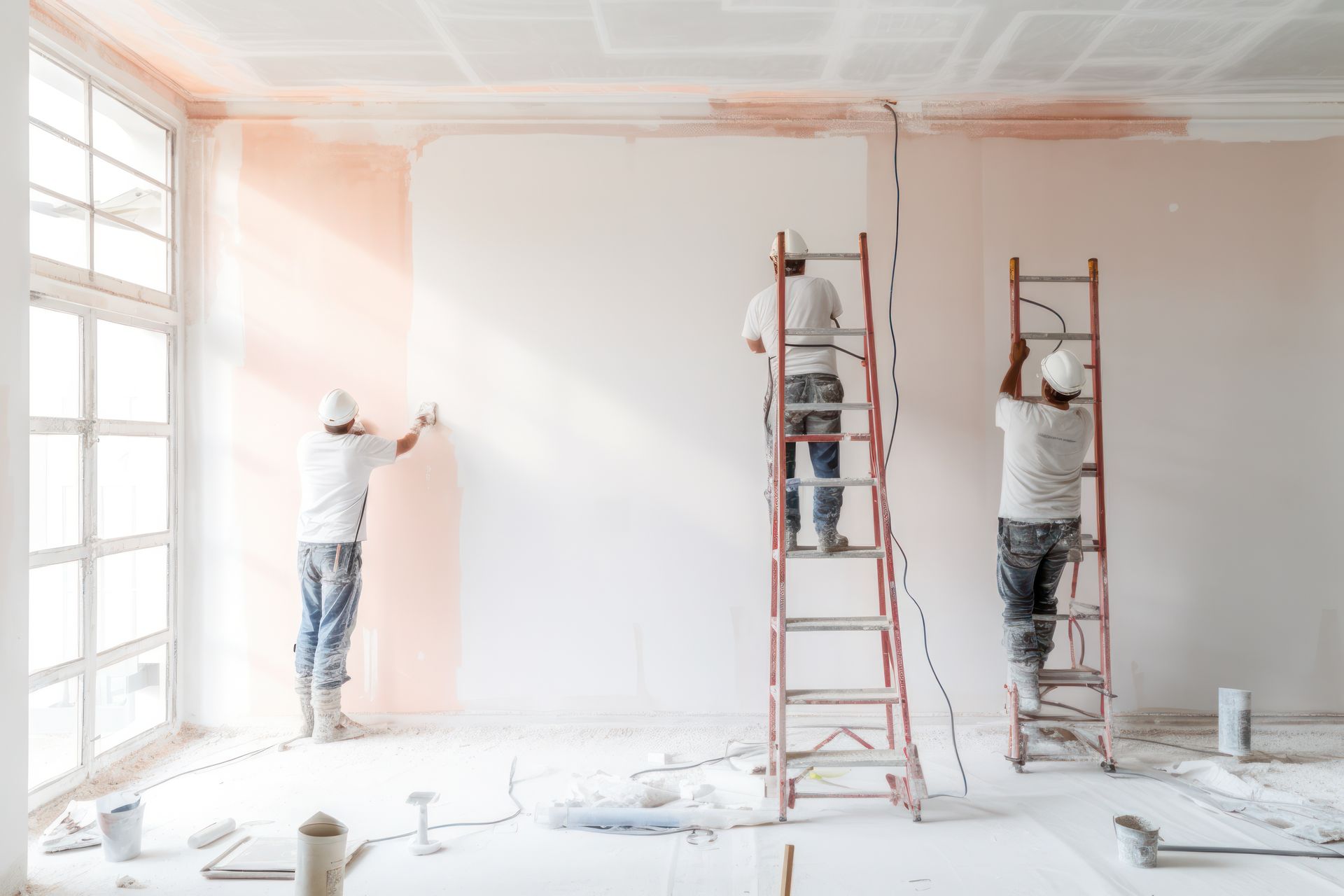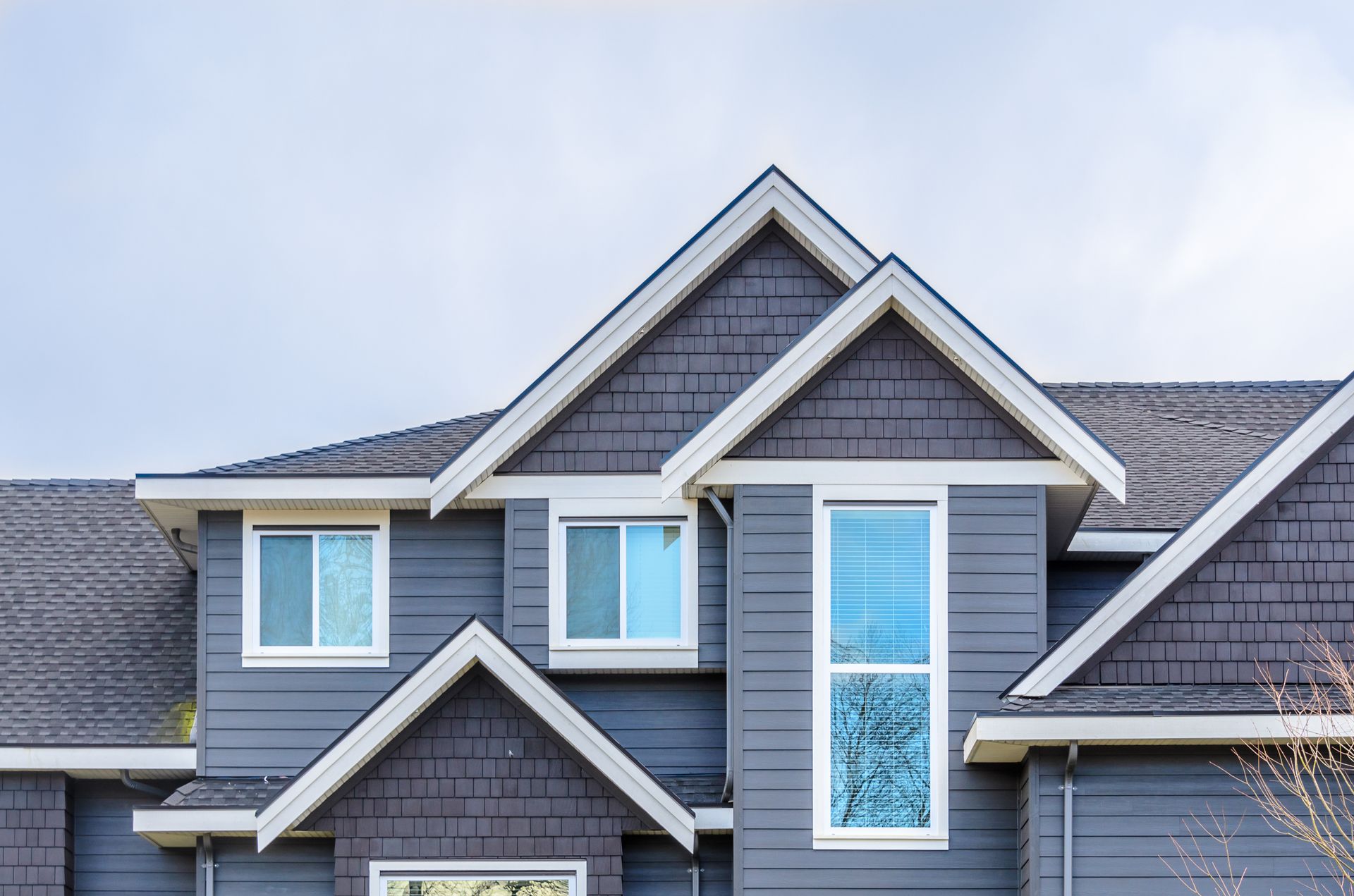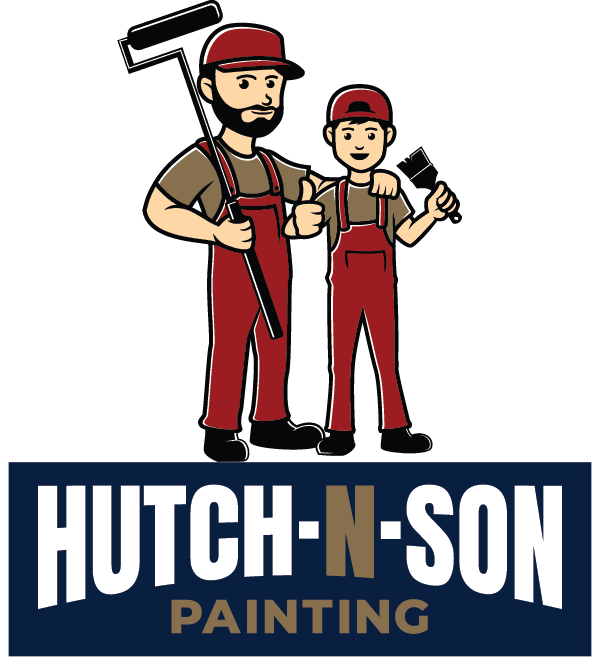The sprawling ranch-style homes that dot the Texas landscape represent more than just architectural preference—they embody a way of life that celebrates wide-open spaces, practical living, and a deep connection to the land. When it comes to selecting exterior paint colors for these iconic homes, the decision involves much more than personal taste or current design trends. The vast Texas landscape, with its intense sunlight, dramatic weather patterns, and distinctive natural palette, demands color choices that not only complement the architectural style but also work harmoniously with the environment while standing up to the state's challenging climate conditions. Understanding how to select colors that enhance your ranch home's natural beauty while providing practical benefits can transform your property into a stunning example of Texas living at its finest.
Understanding the Texas Landscape Context
The Texas landscape provides one of the most diverse and dramatic backdrops in the country, ranging from the desert beauty of West Texas to the lush piney woods of East Texas, with rolling hills, coastal plains, and prairie grasslands creating distinct regional character throughout the state. Each of these landscapes offers different color inspiration and presents unique challenges for exterior paint selection. The key to successful color selection lies in understanding your specific regional context and choosing colors that complement rather than compete with the natural environment surrounding your home.
West Texas landscapes, characterized by desert vegetation, rocky outcroppings, and vast sky views, naturally complement earth-tone color palettes that echo the region's natural sandstone, caliche, and desert plant life. The intense sunlight and minimal atmospheric moisture in these areas create conditions where colors appear more saturated and intense than they might in other climates, making it important to choose colors that won't become overwhelming under the harsh desert sun. The dramatic color changes that occur during Texas sunrises and sunsets also influence how exterior colors appear throughout the day, with warm earth tones taking on golden highlights during these magical times.
East Texas, with its dense forests, abundant water sources, and more humid climate, supports a different color approach that can incorporate deeper greens, rich browns, and colors that complement the lush vegetation and varied seasonal changes. The filtered light created by tree canopies and higher humidity levels can make colors appear softer and more muted, allowing for the use of slightly deeper or more complex color schemes that might be too intense in the stark desert regions.
Central Texas hill country offers perhaps the most varied color opportunities, with its limestone outcroppings, spring wildflower displays, and mix of grassland and forest creating a palette that can support everything from soft limestone whites to deep forest greens, depending on the specific location and surrounding vegetation. Understanding these regional differences is crucial for making color choices that feel authentic and appropriate to your specific location within the vast state of Texas.
The Ranch-Style Architecture Advantage
Ranch-style homes offer unique advantages for exterior color application due to their horizontal emphasis, large surface areas, and typically simple rooflines that create expansive canvases for color expression. The long, low profile of ranch homes naturally complements the Texas landscape's horizontal emphasis, and color choices can either enhance this harmony or create visual discord if not carefully considered. The architectural simplicity of most ranch homes means that color becomes one of the primary tools for creating visual interest and personality.
The extensive wall surfaces typical of ranch homes provide opportunities to use color in ways that wouldn't work on more vertically oriented architectural styles. These large expanses can successfully carry colors that might overwhelm smaller homes, and they provide the space needed to create sophisticated color schemes that incorporate multiple harmonious colors without appearing busy or fragmented. The horizontal board-and-batten siding, brick, or stone commonly found on ranch homes also affects how colors appear, with different materials reflecting and absorbing light differently and influencing the final color appearance.
Window placement and proportion in ranch homes typically create strong horizontal lines that can be enhanced through strategic color choices. Using darker colors on window trim and lighter colors on main wall surfaces can emphasize the horizontal emphasis that makes ranch homes so well-suited to Texas landscapes, while reverse color schemes can create more dramatic contrast effects when desired. The relationship between foundation materials, wall colors, and roof colors becomes particularly important in ranch homes because of the visibility of all these elements from typical viewing angles.
Climate Considerations for Color Selection
Texas climate conditions create unique challenges for exterior paint that go far beyond simple aesthetic considerations. The intense UV radiation, extreme temperature variations, and occasional severe weather events all affect paint performance and color retention over time. Understanding these factors helps ensure that color choices not only look great initially but maintain their appearance for years under challenging Texas conditions.
UV radiation in Texas is among the most intense in the continental United States, particularly in southern and western regions of the state. This intense sunlight can cause certain paint pigments to fade or shift over time, with some colors being much more susceptible to UV degradation than others. Organic pigments, which create many bright and deep colors, are generally more susceptible to UV damage than inorganic pigments, which tend to produce more muted earth tones. This doesn't mean that vibrant colors are impossible in Texas, but it does mean that color selection should consider long-term UV stability to ensure lasting beauty.
Temperature extremes in Texas can cause paint to expand and contract repeatedly, leading to premature failure if colors and paint formulations aren't chosen appropriately. Light colors reflect heat and can help reduce thermal stress on exterior surfaces, while dark colors absorb heat and can reach surface temperatures that stress both the paint and underlying materials. This thermal consideration becomes particularly important for south and west-facing surfaces that receive the most intense sun exposure during the hottest parts of the day.
Humidity variations across Texas also affect paint performance, with coastal areas experiencing high humidity that can affect paint curing and long-term adhesion, while arid regions may present challenges related to rapid moisture loss during paint application. These climate factors influence both color selection and paint formulation choices, making it important to work with painting professionals who understand regional climate impacts on exterior paint performance.
Earth Tone Foundations for Timeless Appeal
Earth tone color palettes provide the most reliable foundation for ranch-style homes in Texas because they naturally harmonize with the landscape while offering excellent practical performance under challenging climate conditions. These colors, inspired by natural materials like stone, clay, sand, and dried vegetation, create a sense of permanence and belonging that enhances the ranch home's connection to the land. The key to successful earth tone application lies in understanding the subtle variations and undertones that can create sophisticated color schemes while maintaining the natural harmony that makes these colors so effective.
Warm beiges and tans offer versatile base colors that work throughout Texas, providing neutral backgrounds that complement both desert and forest environments while reflecting enough light to minimize heat absorption. These colors can range from pale sand tones that echo West Texas desert conditions to richer, more complex beiges that incorporate subtle gray or brown undertones suitable for more varied landscapes. The key is selecting beiges with appropriate undertones that complement rather than clash with surrounding natural colors and existing landscape materials like stone or brick.
Gray color families have gained popularity for ranch homes because they provide sophisticated neutrals that work well with both traditional and contemporary design elements. Texas-appropriate grays range from warm grays with beige undertones that complement limestone and caliche common throughout the state to cooler grays that work well in forested areas with abundant green vegetation. The key to successful gray application lies in choosing grays with appropriate warmth levels and avoiding colors that appear too stark or cold against Texas's naturally warm landscape palette.
Brown color families offer rich, grounding options that work particularly well for ranch homes in heavily wooded areas or regions with abundant natural stone. These colors can range from light cocoa tones that provide warmth without excessive heat absorption to deeper chocolate browns that create dramatic contrast when used strategically with lighter accent colors. The challenge with brown colors lies in selecting shades that enhance rather than overwhelm the home's architectural features while maintaining appropriate contrast with roofing and trim elements.
Regional Color Adaptations
Different regions of Texas offer distinct color opportunities that reflect local landscape characteristics and cultural traditions. Understanding these regional preferences can help homeowners make color choices that feel authentic and appropriate to their specific location while avoiding colors that might seem out of place or forced. These regional considerations go beyond simple color preference to include practical factors like local material availability, traditional building practices, and climate-specific performance requirements.
South Texas ranch homes often benefit from color schemes that acknowledge the area's Mexican and Spanish colonial influences while adapting to the intense sun and heat common in this region. Warm terra cotta, soft coral, and sage green colors can provide cultural authenticity while offering practical heat reflection properties. These colors work particularly well when combined with white or cream trim that provides contrast while maintaining the overall warm color harmony appropriate to the region's cultural and climatic context.
Hill Country ranch homes can successfully incorporate colors inspired by the region's famous limestone outcroppings and seasonal wildflower displays. Soft limestone whites and creams provide classic options that never go out of style, while subtle lavender grays can echo the area's famous bluebonnet displays without becoming overly themed or clichéd. The key is selecting colors that suggest rather than literally copy natural inspirations, creating sophisticated color schemes that complement without competing with the natural beauty of the Hill Country landscape.
East Texas ranch homes in forested areas can support deeper, richer color schemes that might be too intense for more arid regions of the state. Forest greens, deep browns, and even sophisticated burgundy tones can work well when balanced with appropriate lighter accent colors and when applied to homes that are partially shaded by mature trees. These deeper colors can help homes blend naturally into forested environments while providing dramatic beauty that celebrates the lush vegetation common in East Texas.
Accent Color Strategies
While main body colors provide the foundation for ranch home exterior color schemes, accent colors applied to trim, shutters, doors, and architectural details offer opportunities to add personality and visual interest without overwhelming the overall design. The large scale of most ranch homes means that accent colors can be more dramatic than might work on smaller architectural styles, but they still need to be carefully selected and applied to enhance rather than compete with the main color scheme.
White and cream accent colors provide classic, timeless options that work with virtually any main body color while creating clean, crisp contrast that emphasizes architectural details. These light accent colors also provide practical benefits by reflecting heat away from trim elements that might otherwise absorb excessive heat and experience premature paint failure. The key to successful white and cream accent application lies in selecting shades with appropriate undertones that complement rather than clash with the main body color's undertones.
Natural wood tones, whether achieved through stain application or paint colors that mimic wood, can provide warmth and texture that enhances the ranch home's connection to natural materials. These colors work particularly well for elements like shutters, garage doors, and front doors where the natural material appearance adds authenticity and visual interest. The challenge lies in selecting wood tones that coordinate with both the main body color and the surrounding landscape while providing appropriate contrast for visual definition.
Bold accent colors can work successfully on ranch homes when applied judiciously to elements like front doors or small architectural details where they provide focal points without overwhelming the overall design. Colors like deep red, forest green, or navy blue can add personality and character while remaining appropriate to the Texas landscape context. The key is using these bold colors sparingly and ensuring they coordinate with both the main color scheme and the surrounding natural environment.
Practical Application Considerations
Successfully implementing exterior color schemes on ranch homes requires understanding how different surfaces, materials, and architectural elements interact with color choices. The large scale of ranch homes means that color application techniques and coverage considerations become more important than they might be for smaller homes, and the extensive surface areas involved make quality and durability crucial factors in both color and product selection.
Surface preparation becomes particularly important for ranch homes because of the extensive areas involved and the high visibility of any imperfections or failures. Proper cleaning, priming, and repair of existing surfaces ensures that new color applications will perform well and maintain their appearance over time. The horizontal emphasis of ranch architecture means that any surface imperfections or color inconsistencies become highly visible, making thorough preparation essential for professional-quality results.
Color coordination between different materials requires careful planning when ranch homes incorporate multiple exterior materials like brick, stone, wood, and metal. Each material interacts differently with paint colors, and achieving harmonious color schemes requires understanding these interactions and planning color applications accordingly. Professional color consultation can be particularly valuable for complex material combinations to ensure successful integration of all elements.
Long-term maintenance considerations should influence both color selection and application planning for ranch homes. The extensive surface areas involved make maintenance a significant undertaking, so choosing colors and paint systems that provide maximum durability and fade resistance can significantly reduce long-term maintenance requirements. Understanding the maintenance implications of different color choices helps ensure that beautiful initial results can be maintained efficiently over time.
Creating Lasting Texas Beauty
Ranch-style homes offer unique opportunities to create exterior color schemes that celebrate both architectural tradition and regional landscape beauty. The key to success lies in understanding the relationship between color, climate, and landscape while making choices that enhance rather than compete with the natural Texas environment. When color selection, material coordination, and application quality all work together, the result is a home that feels perfectly suited to its Texas setting while providing lasting beauty and practical performance.
The investment in professional color consultation and application pays dividends in both immediate visual impact and long-term satisfaction with your ranch home's appearance. Quality color schemes properly applied can enhance property value while reducing maintenance requirements and ensuring that your home remains a source of pride for years to come. The extensive surface areas of ranch homes make professional application particularly valuable, as the scale involved requires expertise and equipment that ensure consistent, high-quality results across large areas.
When you're ready to transform your Texas ranch home with colors that celebrate both architectural tradition and regional landscape beauty, the experienced professionals at Hutch-N-Son Painting bring over 35 years of expertise to every project. Since 1985, we've been helping Dallas-Fort Worth area homeowners create stunning exterior color schemes that enhance their homes' natural beauty while standing up to Texas's challenging climate conditions. Our team understands the unique considerations involved in ranch home color selection and application, from regional landscape harmony to practical performance requirements. Contact Hutch-N-Son Painting today for a free consultation and discover how professional color expertise can help your ranch home achieve its full potential as a beautiful, enduring part of the Texas landscape.






